
Residents Setting A Course For The Future of Their Community
|
On going discussions...pro and cons, farmers complaints, solutions, controversy.... CLiCK HeRE... |
For the past three years, the Maryland Coastal Bays Program has been uniting Worcester County residents from all walks of life to work together to devise common sense ways of protecting Marylandís coastal bays. This effort, to produce a management plan for the bays behind Ocean City and Assateague, has culminated in a 120-page draft document of strategies aimed at preserving this precious coastal resource.
So far, these representatives from the development, farming, golf,
tourism, and fishing industries have spent more than 4,500 hours of
volunteer time working with scientists and other residents to create
a plan which safeguards the local economy by asking citizens to be good
stewards of the environment.
On the following pages is a synopsis of this effort which provides a rough outline of each ofthe four sections of the plan. The Maryland Coastal Bays Program invites allresidents who use or live in and around the coastal bays to review the plan and offer suggestionsthat may better fulfill the needs or desires of themselves or their businesses. All feedback will be documented and reviewed for incorporation into the management plan.
A copy of the full draft document can be obtained by calling the
Coastal Bays Program office at 410-213-BAYS (2297).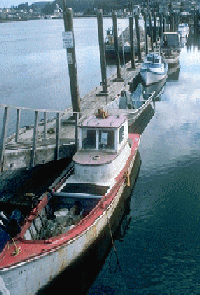
The plan, in its entirety, pinpoints conservation goals and the strategies needed to accomplish those goals. The plan also depicts how much each strategy will cost, who will be responsible for implementing it, and a timetable for implementation of each strategy.
The Coastal Bays Program is a cooperative effort between Worcester County, Berlin, and Ocean City which promise to produce a management plan for their bays by July, 1999. Comments on the plan will be accepted until March 31, 1999.
This is a synopsis of each of the four sections of the 120-page plan. The
format (example on back page) includes a goal statement, the problems
which warrant that statement, the solutions to the problems, and actions
to achieve the recommended solutions. A table at the end of each
segment pinpoints the group responsible for carrying out each action,
the cost of each action, and the year it will be implemented.
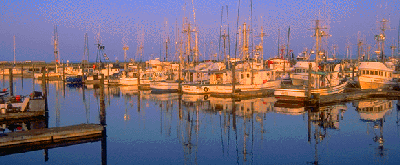 Section 1
Section 1
Water Quality
Primary goal of this section.
Decrease nutrient and sediment loadings and chemical
contaminants to the Coastal Bays from residential areas,
development practices, agricultural runoff, industrial
processes, and atmospheric deposition.
Degraded water quality, or eutrophication, is the greatest environmental problem facing Marylandís Coastal Bays. Eutrophication becomes a serious problem when nutrient and sediment inputs exceed the baysí ability to absorb or effectively process nutrients. Today, the amount of nutri- ents entering the bays is significantly higher than their natural condition. The result is excessive algae blooms that consume the waterís oxygen and stress or kill fish and other aquatic organisms. Nutrient sources come from septic systems, lawn and farm fertilizers, automobile emissions, and the burning of fossil fuels.
Objectives:Section 2Decrease nutrient loadings from groundwater and atmospheric sources.
Decrease nutrient and sediment loadings from stormwater and agricultural.
Decrease nutrient loading from business and industry.
Decrease chemical contamination through pollution prevention and waste recovery practices. Commitment: To achieve this goal we agree:
To implement a program that will maintain existing septic systems, replace failing or antiquated septic systems, and introduce innovative and alternative septic systems capable of reducing nutrient contributions.
To modify stormwater management designs that reduce nutrient-rich surface water from interacting with groundwater.
To improve farming efficiency through tax incentives, cost-sharing, and demonstration projects that reduce nutrient, chemical, and sediment inputs.
To provide information and assistance for proper lawn and garden maintenance.
. To decrease sediment loading through the use of natural shoreline trees and shrubs.
To expand hazardous waste collection efforts and collection sites.
Fish and Wildlife
Primary goal of this section.
Increase the abundance of fin and shellfish species, waterfowl, and other wildlife by providing habitat essential- to their survival.
Blue crabs, summer flounder, hard clams, ducks, song- birds, herons, egrets and a host of mammals and reptiles call eastern Worcester their home. These species rely on coastal bays habitat like seagrasses, islands, beaches,
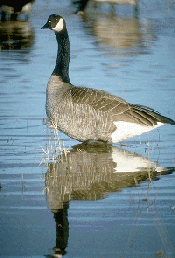 wetlands, and forests for their survival. Since the early
1950ís, significant land use changes to accommodate
agriculture and development have depleted these important-
habitats. Protecting individual species will safeguard
watershed dynamics and biodiversity.
wetlands, and forests for their survival. Since the early
1950ís, significant land use changes to accommodate
agriculture and development have depleted these important-
habitats. Protecting individual species will safeguard
watershed dynamics and biodiversity.
Objectives:Section 3Increase the abundance of fin and shellfish species.
Protect songbirds and other wildlife populations by enhancing forest habitats.
Enhance wetlands to support waterfowl and wildlife populations.
Pursue efforts to protect threatened and endangered species.
Limit the impact of non-native animal and plant species. Commitment: To achieve this goal we agree:
To protect and restore fin and shellfish populations by establishing sustainable harvest measures and by protecting seagrass and shoreline nursery areas.
To develop a forest management strategy that promotes species diversity, supports neotropical birds, and provides opportunities to enhance habitat on agricultural lands.
To increase the amount of wetlands that serve as staging areas for migratory birds and support other wildlife.
To reintroduce select threatened & endangered species and assist landowners with methods for protecting these species.
To reduce introductions of invasive and exotic species such as phragmites and nutria to protect native habitat.
To reduce impacts to native plants and animals from nuisance species such as snow geese and mute swans.
Community and Economic Development
Primary goal of this section.
Involve the community in developing and implementing a vision for Worcester County that promotes tourism, agricultural preservation, and natural resource protection to ensure a sustainable economic future.
In 1940, Worcester Countyís population was 21,245. By
the year 2020, Worcesterís population will be over
72,000 with some 73 percent of these people living in
the Coastal Bays watershed. Worcester County is at a
crossroad, and county residents should begin contemplating-
how and where they want growth to occur. Do we
continue the countyís present growth and development
trends, or do we find alternative ways to address those
issues in order to positively affect our quality of life and
to preserve and protect the fragile coastal bays
watershed?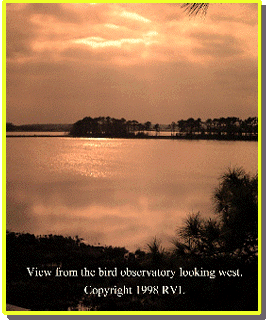
Objectives:Provide tools and information to residents and local officials that result in informed decisions about the future of Worcester County.
Develop community consensus on a vision for the future of the Coastal Bays watershed.
Preserve and enhance forests, wetlands and cultural resources in order to promote the character and culture of the region.
Provide land use decision-making tools to local officials that will minimize local tax burden by utilizing existing infrastructure. Commitment: To achieve this goal we agree:
To sponsor workshops, community forums, and public events that share information on sustainable development, community visioning, natural resource protection, and agricultural and cultural preservation.
To utilize watershed planning tools and Geographic Information Technology in order to develop County ordinances and policies that protect natural resources, preserve farmland, and help attract viable businesses.
To modify County codes and policies to better protect citizens from coastal hazards.
To retain strong agricultural zoning and foster other incentives throughout the county to preserve farmland.
To teach water and energy conservation practices.
Section 4
Recreation and Navigation
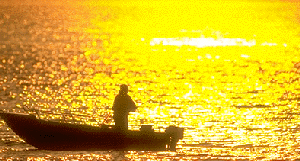 Primary goal of this section.
Primary goal of this section.Protect sensitive aquatic resources in the Coastal Bays and enhance recreational opportunities by improving management of dredging, navigation, and marina activities.
Due to the relatively shallow nature of the Coastal Bays and the constant influx of sand and sediment, the maintenance of navigable waterways to support recreational and - commercial boating is a critical regional need. Marylandís Coastal Bays provide a myriad of recreational opportunities such as hunting, boating, fishing, swimming, and birdwatching. Continuing to provide these opportunities means protecting sensitive areas such as seagrasses that are vital in supporting such activities. Protecting the resouces that support recreation will also require maintaing environmentally sensitive infrastructure at harbos and marinas.
Objectives:Improve mangement of navigation and dredging in the coastal bays and and reduce the amount of sand and sediment entering the Ocean City inlet.
Enhance recreational opportunities in the coastal bays by improving boating safety, navigation and public access.
Implement sustainable management practices at harbors and marinas by improving pollution prevention measures.
Identify sensitive areas and resources incompatible with recreational activities. Commitment: To achieve this goal we agree:
To implement a sand by-pass system for the Ocean City inlet and develop a long-term master plan to guide navigation and dredging decisions.
To institute recreation policies that provide improved public access, protect sensitive aquatic resources, reduce user conflicts, and minimize boating hazards.
To establish guidelines for location and design of new marinas to reduce environmental impacts.
To improve management practices that reduce water uality impacts from harbors and marinas.
Maryland Coastal Bays Program.....
The Maryland Coastal Bays watershed is an impressive coastal resource. It supports abundant- wildlife and outdoor recreational opportunities- in a relaxing rural atmosphere unique to the mid-Atlantic region. Tourists from New York to Virginia and beyond spend millions of dollars by bringing their families to the coastal bays in hopes of catching summer flounder, digging hard clams from the bay bottom, or just enjoying blue crabs in their favorite local restaurant. Conversely, residents look forward to the off-season to enjoy brisk early mornings where migratory ducks and geese fill the sky. Now this coastal community is faced with important choices about its future.
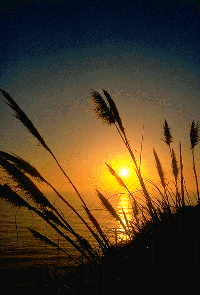
As the area continues to grow, additional stress is being placed on this coastal ecosystem. The Coastal Bays watershed is growing faster than any other area in Maryland. Population trends suggest that Worcester County will see six more developments the size of Ocean Pines by the year 2020. That equals another 40,000 residents in 21 years. Historically, growth and development has brought new roads, additional sewer, land consumption, increased congestion, and demand for new services such as police, fire, and schools. As growth continues, additional stress will be placed on the land and water resources that define this coastal community.
The intricate relationship between economic and environmental prosperity is manifest every year by the 12 million visitors who support the watershedís $2 billion tourism industry. Recreational attractions like swimming, boating, fishing, and birding are all dependent upon healthy natural resources. In Worcester County alone, there are over 3,000 registered- boats, not including the significant numbers of visitors who haul their boats to the coastal bays. Current vacation trends indicate that tourists are now looking for more unique and memorable vacations, which will include canoe trips, camping, and biking rural roads. Preserving historical and cultural resources will be an important component in keeping Worcester a viable tourist destination.
Nowhere is the countyís cultural essence more prevalent than in farming, a way of life for this community- for over 200 years. Orchards of all types were once prevalent on the Eastern Shore and provided fruits and vegetables to major cities like Wilmington and Philadelphia. Today, farming primarily supports the poultry industry, and Worcesterís 474 farms contribute more than $200 million annually to the local economy. Farms also demand few services for the amount of land managed, resulting in less community infrastructure costs. Because farms provide open space and habitat for wildlife, retaining agriculture is important- for maintaining quality of life.
Fortunately, preparing for the future is easier
today than ever before. More information is available
about tourism trends, growth and development tools,
agricultural practices, and aesthetic values. By bringing this information to the forefront, local
communities can make better decisions about their
future. Since 1996, The Maryland Coastal Bays
Program has been fostering consensus on these issues
by uniting different segments of the community to
produce the comprehensive management plan for the
coastal bays found on the following pages.
By bringing this information to the forefront, local
communities can make better decisions about their
future. Since 1996, The Maryland Coastal Bays
Program has been fostering consensus on these issues
by uniting different segments of the community to
produce the comprehensive management plan for the
coastal bays found on the following pages.
Local residents and representatives from the
development, agriculture, fishing, golf, and tourism
industries are the authors of this effort. With help
from planners and scientists from a host of local,
state, and federal agencies, Worcester County residents,-
dents, who own this plan, seek to protect and
preserve this special part of Maryland by setting a
course for the ecological and economic prosperity of
this coastal paradise.
Example of plan format...
GOAL 1 Balance resource protection with recreational use. RU 1.1 Problem: Resource impacts from water-based recreational activities Certain water-based recreational activities are thought to be incompatible with long-term protection of coastal bay resources. The presence of too many boats and personal watercraft (PWC) in sensitive areas poses threats to natural resources due to pollution, direct impacts, and excessive noise. Action is needed to identify sensitive estuarine resources, evaluate the risks from specific recreationalactivities, and develop appropriate management tools to mitigate those threats. Solution: Identify sensitive resources and incompatible recreational activities. Develop protection mechanisms and educate the public to reduce damage and disruption to sensitive resources and personal property. Actions: 1. NOAA, DNR and the US Fish and Wildlife Service will develop maps of sensitive resource locations throughout the entire bay system. 2. DNR and the National Park Service will identify outstanding research/information needs related to recreational activity effects on natural resources. 3. DNR will convene an interagency task force of resource experts to evaluate resource sensitivity and threats, emphasizing activities and locations having the greatest negative impacts and establish priorities for protection. 4. The MD Coastal Bays Program (MCBP) will investigate protection mechanisms used in other parts of the country. 5. MCBP and USCG will solicit input regarding protection alternatives through public workshops. 6. DNR and other responsible agencies will develop specific protection measures for application in the coastal bays. Potential opportunities include, but are not limited to: A. Designation of resource sanctuaries to improve habitat for recreationally and commercially important fish and shellfish species. B. Designation of zones for specific types of use (Virginia Beach model). C. Creation of new sensitive habitat types in areas with minimal potential conflicts. D. Catch-and-release fishing programs. E. Time-of-year use restrictions. F. Development of upland recreational opportunities and attractions to reduce pressure on coastal bay resources. G. Targeted public education campaigns. 7. MCBP will enhance public awareness of resource protection issues and needs. A. Produce fact sheets and newspaper articles to publicize resource protection problems/solutions and sensitive resources and areas. B. Distribute copies of DNR threatened & endangered species brochure. C. Develop resource protection posters for display at local boat dealers, rental outlets, marinas, visitor centers, and other focal areas. D. Work with USCG auxiliary to distribute resource protection information during annual boat inspections (e.g. sticker for boat consoles listing key resource protection tips). E. MCBP and DNR will develop curricula for a required boater education course to include environmental protection information. F. Work with navigation chart producers to enhance the information on local charts to include sensitive areas, bathymetry (water depths), sewage pump-out facilities and resource protection tips. G. Place size and creel fishing limits in popular land-based fishing areas and by boat launch facilities. RESPONSIBLE PARTIES: MD Department of Natural Resources, US Fish and Wildlife Service, NOAA, National Marine Fisheries Service, Assateague Island National Seashore (ASIS), Worcester County, Army Corps of Engineers, USCG, Power Squadron, MD Saltwater Sportsfishermen Association, MD Coastal Bays Program.
![]() Weather
Weather![]() Useful
Town Information
Useful
Town Information ![]() Watersports
Ocean Sports
Watersports
Ocean Sports![]()
![]() Dining
Crabs Restaurants
Dining
Crabs Restaurants ![]() Articles
and News
Articles
and News![]() Skateboarding
and Bicycles
Skateboarding
and Bicycles![]()
![]() Golf
Courses Town Parks Camping Vacilities
Golf
Courses Town Parks Camping Vacilities ![]()
![]() Town
Events and Holiday Activities
Town
Events and Holiday Activities ![]() Editorials
Editorials ![]()
![]()